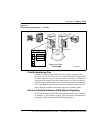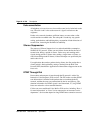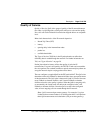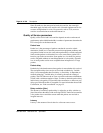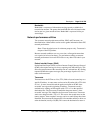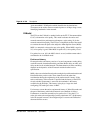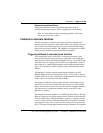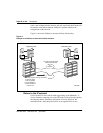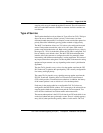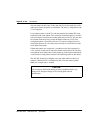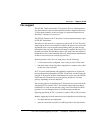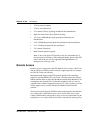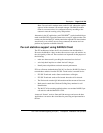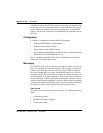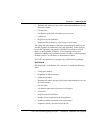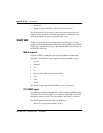
Description Page 59 of
378
ITG Trunk 2.0 ISDN Signaling Link (ISL) Description, Installation and Operation
outgoing calls are again routed through the IP network. The call connections
that were established under the Fallback to alternate facilities condition are
not affected.
Type of Service
The IP packet handler has a byte of data for Type of Service (ToS). This byte
allows the user to indicate a packet’s priority so that routers can more
efficiently handle data packets. For example, a router can decide to queue low
priority data while immediately passing packets marked as high priority.
The MAT User Interface allows two ToS values to be configured: data and
control. Data packets transmit the voice or fax call’s data, while control
packets setup and maintain the call. Both can be configured for any value in
the range of 0 – 255 (0 is the default). When an ITG node is configured, ToS
bits are initially set to default values. The MAT ITG Node administration
interface allows the customer to configure these bits for potentially better
interworking with different manufacturers’ routing equipment. The extent of
any improvement from setting these ToS bits depends on the network routing
equipment. Improvements can vary depending on the router’s prioritization
algorithms.
The data ToS is placed in every voice or fax data packet sent from the ITG
ISL Trunk card. To optimize the speech quality, ToS is usually configured for
low-latency and high-priority.
The control ToS is placed in every signaling message packet sent from the
ITG ISL Trunk card. Signaling links use Transmission Control Protocol
(TCP) which provides a retransmission mechanism. In addition, the latency
of the control packets is not as critical as it is for the data packets.
Each entry in the routing table has a configurable ToS. ToS values are
configured in the DSP Profile window. For a route entry to be selected for an
outgoing packet, both the configured route and the ToS must match. Two
cases must be considered: local subnet traffic and remote traffic.
The remote subnet packets is the H.323 call data for an ITG node which is not
on the local subnet and must go through a router. There is a default gateway
entry (0.0.0.0) that specifies the gateway address for this traffic. The ToS



